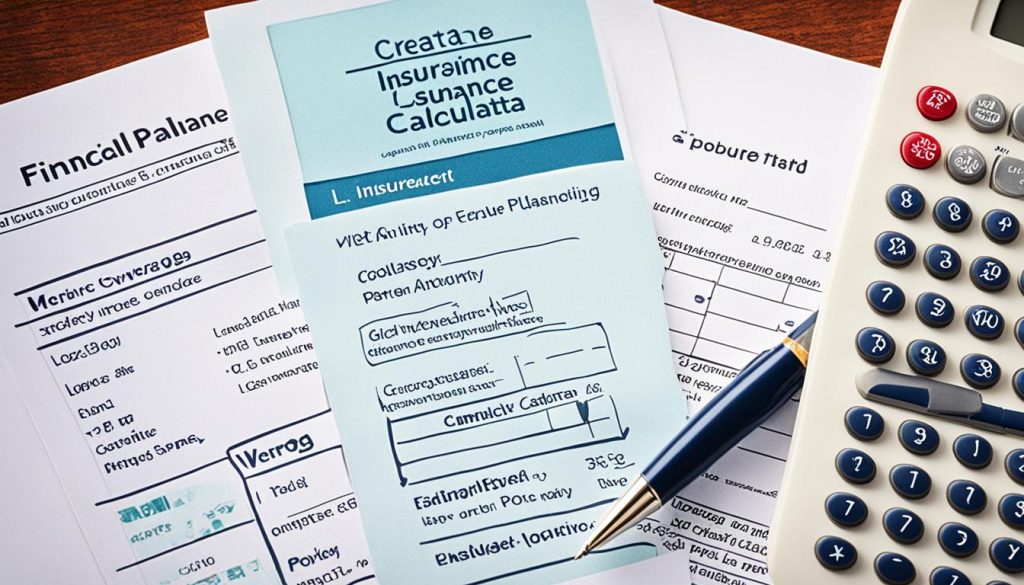The Importance of Life Insurance in Financial Planning and Protection for Your Loved Ones
Life insurance plays a crucial role in both financial planning and providing protection for your loved ones. It offers customizable coverage options and allows you to tailor the premiums according to your preferences. Funding sources can range from cash to liquidating assets or utilizing life insurance premium financing. Regular review of your insurance policies is vital to ensure optimal coverage, guarantees, and policy attributes. Ownership and beneficiary structures should be carefully considered. Overall, life insurance should be approached from a planning perspective, taking into account your estate plan and legacy.
Key Takeaways:
- Life insurance is essential for financial planning and protecting your loved ones.
- Customizable coverage options allow you to tailor the policy to your needs.
- Regular policy review ensures optimal coverage and policy attributes.
- Consider ownership and beneficiary structures for effective life insurance planning.
- Approach life insurance from a planning perspective, considering your estate plan and legacy.
The Benefits of Life Insurance
Life insurance offers a range of benefits that can provide you and your loved ones with financial security and peace of mind. Whether you are planning for the future or looking to protect your family in the event of your passing, life insurance can offer valuable coverage options.
Financial Security: One of the primary benefits of life insurance is the financial security it provides. In the event of your passing, a life insurance policy can help support your spouse and children by providing them with the necessary funds to cover living expenses, pay off debts, and take care of medical or final expenses.
Tax-Free Death Benefit: The death benefit from a life insurance policy is typically not subject to federal income taxes. This means that your beneficiaries will receive a substantial cash payout without having to worry about tax implications. This can offer significant financial relief during an already difficult time.
“Life insurance offers peace of mind, ensuring that your loved ones are financially protected during a difficult time.”
Customizable Coverage Options: Life insurance policies come with various coverage options, allowing you to tailor the policy to your specific needs and preferences. Whether you need temporary coverage with a term life insurance policy or lifelong protection with a whole life insurance policy, there is a coverage option available to suit your requirements.
Having life insurance in place provides you and your loved ones with the confidence and assurance that financial security will be maintained even if the unexpected happens.
Comparison Table: Types of Life Insurance Policies
| Type of Policy | Description | Key Features |
|---|---|---|
| Term Life Insurance | Provides coverage for a specific period, usually 10, 20, or 30 years. | – Lower premiums – No cash value buildup – Temporary coverage |
| Whole Life Insurance | Offers lifelong coverage and builds cash value over time. | – Guaranteed death benefit – Cash value accumulation – Fixed premiums |
| Universal Life Insurance | Provides flexible premiums and the potential for investment returns. | – Flexible coverage and premiums – Cash value accumulation – Potential for investment growth |
Types of Life Insurance Policies
When it comes to life insurance, there are various policy options available to suit different needs. Understanding the different types of life insurance policies can help you make an informed decision for your financial future.
Term Life Insurance
Term life insurance provides coverage for a specific period, typically 10, 20, or 30 years. This type of policy offers a death benefit that is paid out to your beneficiaries if you pass away during the specified term. It is a popular choice for individuals looking for affordable coverage and temporary protection. Term life insurance does not build cash value over time.
Whole Life Insurance
Whole life insurance offers lifelong coverage and guarantees a death benefit to your beneficiaries whenever you pass away. This type of policy also accumulates cash value over time, which you can access through withdrawals or loans. Whole life insurance is a good option for those looking for lifelong financial protection and the opportunity for cash value growth.
Universal Life Insurance
Universal life insurance provides both a death benefit and a cash value component. It offers more flexibility compared to whole life insurance, allowing policyholders to adjust their premium payments and death benefit amount. Universal life insurance policies also have the potential for investment returns, as a portion of the premiums can be allocated to different investment options. This type of policy is suitable for individuals seeking flexibility in their coverage and potential growth of cash value.
To help you visualize the differences between these types of life insurance policies, refer to the table below:
| Policy Type | Coverage Duration | Cash Value Accumulation | Flexibility |
|---|---|---|---|
| Term Life Insurance | Specific term (e.g., 10, 20, or 30 years) | No | No |
| Whole Life Insurance | Lifelong | Yes | No |
| Universal Life Insurance | Lifelong | Yes | Yes |
Understanding the different types of life insurance policies is essential in selecting the one that aligns with your financial goals and provides adequate protection for your loved ones.

Comparing Life Insurance Quotes and Companies
When it comes to purchasing life insurance, comparing quotes from different companies is essential to ensure you get the best coverage at the most competitive price. With numerous options available, it’s important to take the time to compare rates and policies to find the right fit for your needs.
Online comparison tools make it easy to gather multiple quotes quickly and efficiently. These tools allow you to input your information once and receive quotes from various life insurance providers. With just a few clicks, you can compare premiums, coverage amounts, and policy terms side by side.
However, comparing quotes is not the only factor to consider. Evaluating the ratings and reputation of life insurance companies is equally important. Look for companies with strong financial stability and a positive track record in paying claims. This information can provide valuable insight into the reliability and trustworthiness of a company.
Pro Tip: Don’t just focus on price when comparing life insurance quotes. Consider the financial strength of the company and their reputation for customer service. You want assurance that your loved ones will be taken care of when the time comes.
Some organizations, such as A.M. Best and Standard & Poor’s, provide ratings for life insurance companies based on their financial strength and stability. These ratings can serve as a useful guide when selecting a reliable provider.
Comparing Life Insurance Quotes: A Step-by-Step Guide
Follow these steps to effectively compare life insurance quotes and companies:
- Start by determining your insurance needs and the amount of coverage you require. Consider factors such as your income, debts, and future financial obligations.
- Use online comparison tools to gather quotes from multiple life insurance companies. Input your information accurately to receive accurate quotes.
- Compare premiums, coverage amounts, policy terms, and any additional policy features or riders.
- Consider the financial stability and ratings of the insurance companies. Look for companies with strong financial backing and a positive reputation for claims payment.
- Review customer reviews and feedback to gain insights into the overall customer experience.
- Consult with a licensed insurance agent or financial advisor to clarify any doubts and make an informed decision.
By taking the time to compare life insurance quotes and evaluate the reliability of insurance companies, you can confidently select the right coverage for your needs. Remember, life insurance is a valuable investment in your family’s future financial security.
Understanding Policy Options and Coverage Amounts
When it comes to life insurance, there are important policy options and coverage amounts to consider. These choices can have a significant impact on the protection and financial security provided to your loved ones. Understanding your needs and utilizing a life insurance calculator can help guide you in making informed decisions.
One of the key policy options is choosing the coverage amount – the sum of money that will be paid out to your beneficiaries upon your passing. This amount should be carefully determined based on factors such as your income, debts, and future financial obligations. You should also consider the financial needs of your loved ones, such as mortgage payments, educational expenses, and other ongoing costs.
To ensure your chosen coverage amount is adequate, it’s recommended to use a life insurance calculator. This powerful tool takes into account various financial factors and helps estimate the appropriate coverage that aligns with your specific circumstances.
A life insurance calculator uses input variables, such as your age, income, outstanding debts, and desired future expenses, to determine the optimal coverage amount for your policy. It provides a personalized recommendation that offers peace of mind, ensuring that your loved ones will be financially protected in the event of your passing.
Consulting with a financial professional is another valuable step to understand policy options and coverage amounts. They can provide expert guidance and help you navigate through the available choices. A financial advisor will analyze your unique circumstances, including your financial goals and risk tolerance, to help you select the right policy options and coverage amounts that suit your needs.
Example Life Insurance Calculator Output:
| Input Variables | Estimated Coverage Amount |
|---|---|
| Age: 35 | $500,000 |
| Income: $75,000 per year | |
| Outstanding Debts: $100,000 | |
| Desired Future Expenses: $250,000 |
Based on the provided input variables, the estimated coverage amount is $500,000. This provides a financial safety net for your loved ones, accommodating your income replacement needs, settling any outstanding debts, and covering future expenses, including education, mortgage payments, and other financial obligations.

Understanding your policy options and coverage amounts is essential for securing the financial future of your loved ones. By utilizing a life insurance calculator and seeking professional advice, you can make informed decisions that provide the right level of protection and peace of mind.
The Importance of Regular Policy Review and Updates
Regularly reviewing and updating your life insurance policies is crucial to ensure that they remain aligned with your changing circumstances. Life events such as marriage, starting a business, or the birth of a child may require revisions to your policy to provide adequate coverage for your evolving needs.
Conducting an annual policy review is an essential practice that can help you assess the effectiveness of your current coverage and explore opportunities for improvement. During the review process, you can evaluate your policy’s terms, benefits, and premiums to ensure they continue to meet your financial goals.
An annual policy review can also present new options that may be more attractive in terms of stronger guarantees, policy attributes, or cost-effectiveness. It provides an opportunity to compare your current policy with other offerings in the market, ensuring you have the best possible coverage tailored to your needs.
In addition to assessing the policy itself, it’s essential to review and update your ownership and beneficiary designations. Over time, your circumstances and relationships may change, and it’s essential to ensure that your policy reflects your current wishes. Regularly reviewing these designations will help you avoid unintended consequences and potential complications in the event of a claim.
To ensure that you make well-informed decisions during the policy review process, it’s beneficial to consult with a financial professional. They can provide valuable guidance and insights, helping you evaluate your current coverage and explore alternative options if necessary. A financial professional can also assist you in understanding complex policy details and assessing the potential impact of policy revisions on your overall financial plan.
The Benefits of Regular Policy Review and Updates:
- Ensure your coverage remains adequate and aligned with your changing circumstances.
- Explore new policy options that may provide stronger guarantees or more attractive attributes.
- Review ownership and beneficiary designations to reflect your current wishes.
- Receive guidance and insights from a financial professional to make informed decisions.
Regularly reviewing and updating your life insurance policies is a proactive approach to ensure that your coverage remains optimal, protecting your loved ones and providing you with peace of mind.
Annual Policy Review Checklist:
| Steps | Description |
|---|---|
| Assess Coverage Needs | Evaluate if your current coverage aligns with your financial goals and obligations. |
| Compare Policies | Research and compare policies from different providers to explore new options. |
| Evaluate Policy Attributes | Review the terms, benefits, and premium structure of your current policy. |
| Review Ownership and Beneficiary Designations | Ensure that the policy ownership and beneficiary designations reflect your current wishes. |
| Consult a Financial Professional | Seek guidance from a financial professional to navigate the policy review process. |
Regular policy review and updates are essential components of responsible life insurance ownership. By staying proactive and keeping your coverage in line with your evolving needs, you can ensure that your loved ones are protected and your policy continues to support your overall financial plan.
Conclusion
Life insurance plays a vital role in financial planning and provides essential financial protection for your loved ones. With customizable coverage options and various policy types, life insurance allows you to tailor your premiums to fit your specific needs. However, it is crucial to regularly review and update your policies to ensure your coverage remains optimal. By understanding the benefits of life insurance, comparing quotes and companies, and choosing the right policy options, you can secure your family’s future and enhance your overall financial plan.
Financial planning involves making strategic decisions to achieve your goals, and life insurance is a valuable tool in that process. It offers peace of mind, knowing that your loved ones will be financially protected in the event of your passing. Whether it’s paying off debts, covering living expenses, or taking care of medical bills, life insurance provides a safety net during difficult times.
When considering life insurance, it is essential to assess your needs and calculate the appropriate coverage amount using a life insurance calculator. Additionally, comparing quotes from different insurance companies is crucial to ensure you are getting the best coverage at the most competitive price. Look for reputable companies with strong financial stability and a positive track record in paying claims.
In conclusion, life insurance should be viewed as an integral part of your financial plan, offering both peace of mind and financial protection for your loved ones. Regular policy review, comprehensive coverage, and careful consideration of insurance options are key to ensuring your family’s future is secure. By making informed choices and working with a trusted financial professional, you can establish a solid foundation for your financial well-being.
FAQ
What is the importance of life insurance in financial planning and protection for your loved ones?
Life insurance plays a crucial role in both financial planning and providing protection for your loved ones. It offers customizable coverage options and allows you to tailor the premiums according to your preferences. Funding sources can range from cash to liquidating assets or utilizing life insurance premium financing. Regular review of your insurance policies is vital to ensure optimal coverage, guarantees, and policy attributes. Ownership and beneficiary structures should be carefully considered. Overall, life insurance should be approached from a planning perspective, taking into account your estate plan and legacy.
What are the benefits of life insurance?
Life insurance provides various benefits, including financial security for your spouse and children in the event of your passing. It can help pay off debts, cover living expenses, and take care of medical or final expenses. The death benefit from a life insurance policy is typically not subject to federal income taxes, providing a substantial cash payout to your beneficiaries. Life insurance offers peace of mind, ensuring that your loved ones are financially protected during a difficult time.
What are the types of life insurance policies available?
There are different types of life insurance policies available, including term life insurance, whole life insurance, and universal life insurance. Term life insurance provides coverage for a specific period, usually 10, 20, or 30 years. Whole life insurance offers lifelong coverage and builds cash value over time. Universal life insurance offers flexible premiums and the potential for investment returns. Each type of policy has its own features and benefits, and it’s important to understand them to make an informed decision.
How do I compare life insurance quotes and companies?
When purchasing life insurance, it’s essential to compare quotes from different companies to ensure you’re getting the best coverage at the most competitive price. Online comparison tools can help you compare rates and policies easily. It’s also crucial to consider the ratings and reputation of insurance companies. Look for companies with strong financial stability and a positive track record in paying claims.
How do I determine the right policy options and coverage amounts for my life insurance?
Life insurance policy options include choosing the coverage amount, the length of the policy, and the premium payment structure. It’s important to assess your needs and calculate the appropriate coverage amount using a life insurance calculator. Factors to consider include your income, debts, future financial obligations, and the financial needs of your loved ones. A financial professional can help you determine the right policy options and coverage amounts based on your specific circumstances.
Why is it important to regularly review and update my life insurance policies?
It’s crucial to regularly review your life insurance policies to ensure they align with your changing circumstances. Life events such as marriage or starting a business may require revisions to your policy. Additionally, conducting an annual policy review can uncover more attractive policies, stronger guarantees, and policy attributes. Ownership and beneficiary designations should also be reviewed to ensure they reflect your current wishes. Consulting a financial professional can provide valuable guidance during the policy review process.
